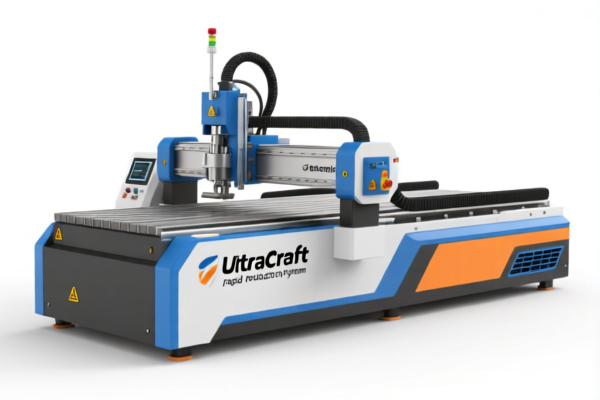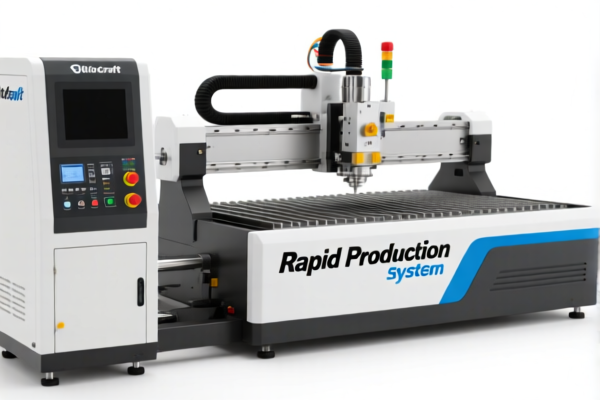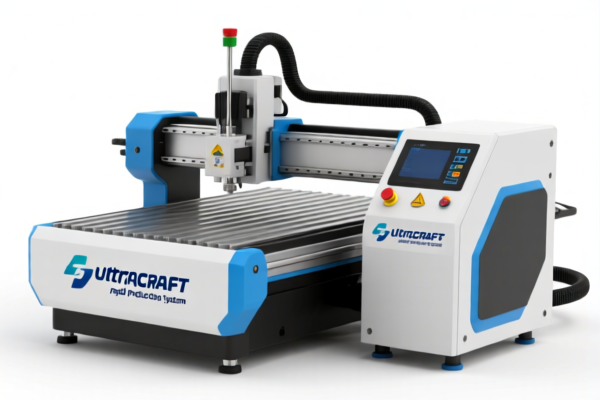| HS Code | Official Doc | Tariff Rate | Origin | Destination | Effective Date |
|---|---|---|---|---|---|
| 8485800000 | Doc | 57.5% | CN | US | 2025-05-12 |
| 8485909000 | Doc | 55.0% | CN | US | 2025-05-12 |
| 8487900080 | Doc | 83.9% | CN | US | 2025-05-12 |
| 8487900040 | Doc | 58.9% | CN | US | 2025-05-12 |
| 9503000090 | Doc | 30.0% | CN | US | 2025-05-12 |
| 9503000071 | Doc | 30.0% | CN | US | 2025-05-12 |




Ultracraft Rapid Production System
The Ultracraft Rapid Production System (URPS) is a modular, scalable manufacturing system designed for high-throughput, low-volume production of customized parts, primarily within the aerospace, defense, and medical industries. It focuses on minimizing lead times and maximizing flexibility, enabling the creation of complex geometries with tight tolerances.
Material Compatibility:
URPS is not a material-specific system in itself, but rather a method for processing materials. It is commonly used with:
- Aluminum Alloys: Particularly 6061 and 7075, due to their machinability and strength.
- Titanium Alloys: For high-strength, lightweight components.
- Stainless Steel: Used for corrosion resistance and durability.
- High-Temperature Alloys: Such as Inconel, for extreme environment applications.
- Plastics & Composites: With specialized tooling and programming, certain URPS configurations can handle these materials.
Purpose & Function:
The core purpose of URPS is to drastically reduce the time required to manufacture parts, especially prototypes and small production runs. It achieves this through:
- Automated Tooling: The system utilizes a library of pre-configured, rapidly deployable tooling modules.
- Machine-Tending Robotics: Robots automate the loading and unloading of parts, reducing manual intervention.
- Closed-Loop Process Control: Real-time monitoring and adjustment of machining parameters ensure consistent quality.
- Digital Twin Integration: A virtual representation of the manufacturing process allows for simulation, optimization, and predictive maintenance.
- Standardized Interfaces: Modules are designed to work together seamlessly, allowing for quick reconfiguration.
Usage Scenarios:
- Prototype Development: Quickly iterating on designs and producing functional prototypes.
- Low-Volume Production: Manufacturing parts in quantities ranging from a few to hundreds.
- Customized Parts: Producing unique components tailored to specific customer requirements.
- Bridge Manufacturing: Creating parts to fill gaps during long lead times for traditional manufacturing.
- Tooling Verification: Testing and refining tooling designs before large-scale production.
- Emergency Replacements: Rapidly producing replacement parts for critical systems.
Common Types & Configurations:
URPS is not a single machine, but a framework. Implementations vary greatly based on specific needs, but common configurations include:
- Multi-Axis Machining Centers: Typically 3, 4, or 5-axis mills equipped with automated tool changers and robotic loading.
- Turning Centers: For cylindrical parts, often integrated with robotic handling systems.
- Mill-Turn Centers: Combining milling and turning capabilities for complex geometries.
- Additive Manufacturing Integration: Combining additive processes (like 3D printing) with subtractive machining for hybrid part creation.
- Robotic Cells: Dedicated robotic workcells for specific tasks like deburring, inspection, or assembly.
- Modular Fixturing Systems: Rapidly configurable fixtures for holding parts during machining.
Key Advantages:
- Reduced Lead Times: Significantly faster than traditional manufacturing methods.
- Increased Flexibility: Easily adaptable to different part designs and materials.
- Lower Costs: Reduced setup times and manual labor contribute to lower overall costs.
- Improved Quality: Closed-loop process control ensures consistent part quality.
- Scalability: The modular design allows for easy expansion as production needs grow.
The declared goods, “ultracraft rapid production system”, appear to be machinery used in additive manufacturing processes. Here's a breakdown of potentially relevant HS codes based on the provided information:
-
8485800000: This HS code covers “Machines for additive manufacturing: Other”. This is a broad category and could apply if the system doesn’t fall into a more specific classification within Chapter 84, Heading 85. The base tariff is 2.5%, with an additional 25.0% tariff, increasing to 30% after April 2, 2025, resulting in a total tariff of 57.5%.
-
8485909000: This HS code covers “Machines for additive manufacturing: Parts: Other”. If the “ultracraft rapid production system” is being imported as components or spare parts for an additive manufacturing machine, this code may be applicable. The base tariff is 0.0%, with an additional 25.0% tariff, increasing to 30% after April 2, 2025, resulting in a total tariff of 55.0%.
-
8487900080: This HS code covers “Machinery parts, not containing electrical connectors, insulators, coils, contacts or other electrical features, and not specified or included elsewhere in this chapter: Other Other”. If the system includes non-electrical mechanical parts, this code could be relevant. The base tariff is 3.9%, with an additional 25.0% tariff, increasing to 30% after April 2, 2025. A further 25% tariff applies to steel and aluminum products, resulting in a total tariff of 83.9%.
-
8487900040: This HS code covers “Machinery parts, not containing electrical connectors, insulators, coils, contacts or other electrical features, and not specified or included elsewhere in this chapter: Other Oil seals, other than those of chapter 40”. If the system includes oil seals (excluding those classified under Chapter 40), this code may be applicable. The base tariff is 3.9%, with an additional 25.0% tariff, increasing to 30% after April 2, 2025, resulting in a total tariff of 58.9%.
According to the provided reference material, the HS code options related to 'ultracraft rapid production system' are limited, with only the following 4 found.
It is important to note that the final HS code classification will depend on the specific characteristics and components of the “ultracraft rapid production system”. For HS codes 8487900080, please note the additional 25% tariff applicable to steel and aluminum products.
Customer Reviews
No reviews yet.